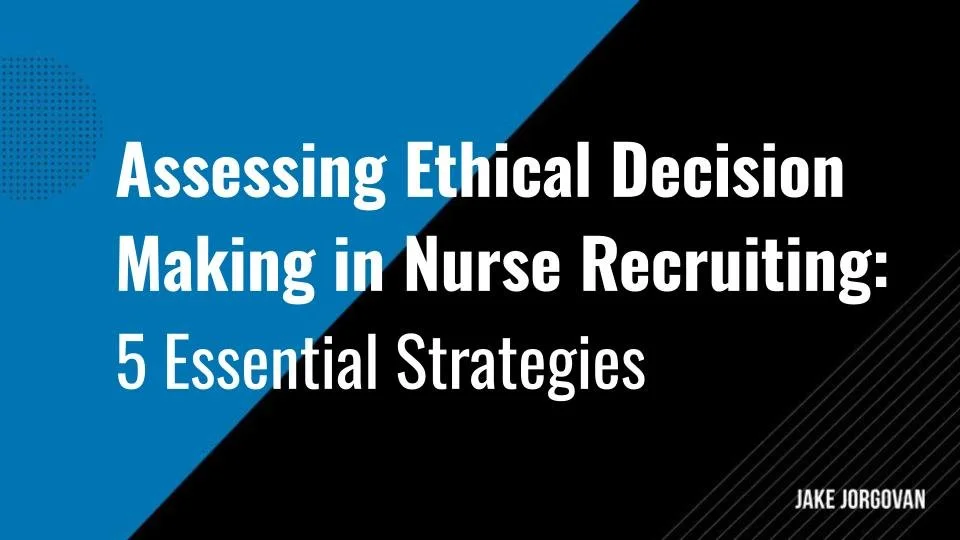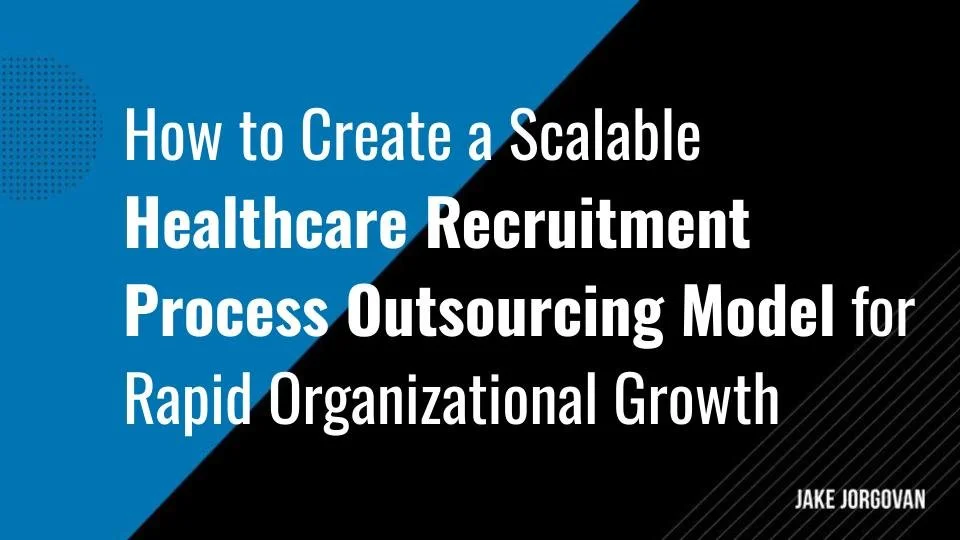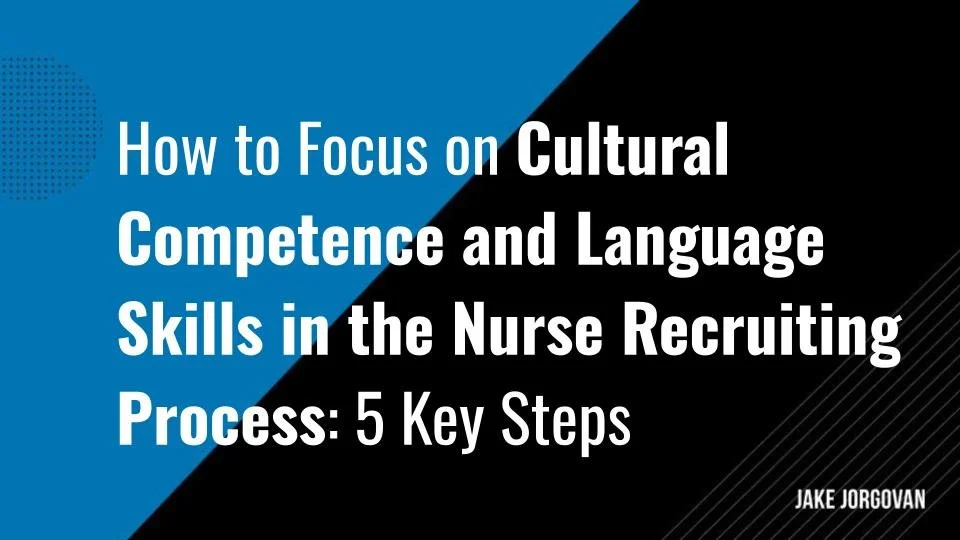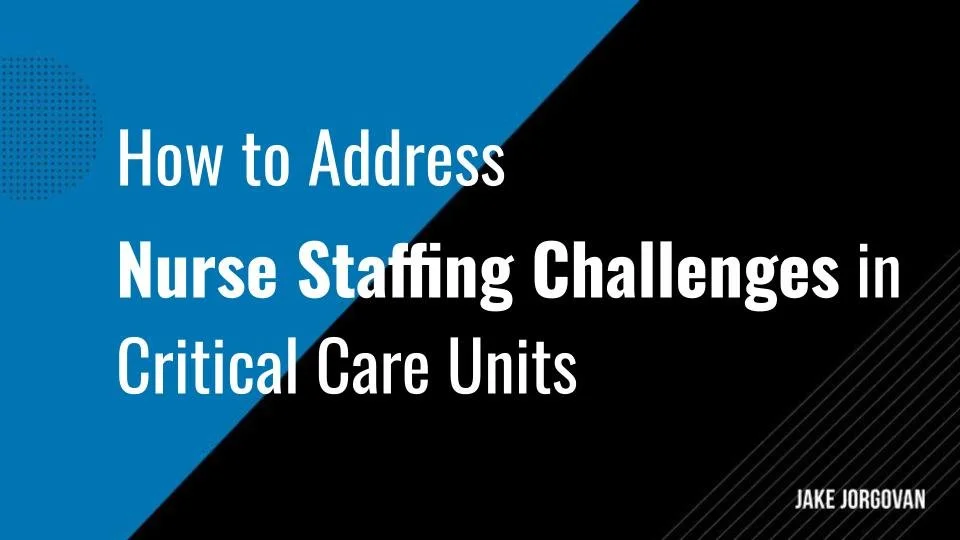5 Trends Defining the Physician Recruiting Market in 2025
Physicians are one group of professionals that will always be in demand. Until we can cure every known illness, the world is going to need doctors.
However, the physician recruiting market is constantly changing. Healthcare hiring trends, such as market demands, new technologies, and changing needs, can all impact how healthcare organizations attract, recruit, and retain the best physicians.
Understanding these trends is essential for staying competitive. In this article, we’ll break down five key trends defining the physician job market to help you adapt and refine your recruitment strategy.
Let’s dive into the trends reshaping physician recruiting today.
Do Challenges in Physician Recruitment Differ By Region?
One of the common challenges in physician recruitment is that there can be huge differences between different regions. Finding a skilled physician in a busy, popular city is a very different task from finding someone to work in a small rural town.
Here are some of the ways location can impact your search:
Underserved or Rural Areas
Many rural or underserved regions struggle to attract qualified physicians. This is because they have fewer amenities, lower salaries on average, and a lack of professional growth opportunities. Employers here should try to emphasize the benefits of making a real difference and escaping expensive city life.
Cost of Living Variations
In 2024, the cost of living in major urban centers like San Francisco and New York City has become a significant factor in physician recruitment. For instance, to live comfortably in San Francisco, an annual salary of $252,878 is required, while in New York City, it's $175,909.
These high living expenses can deter physicians, especially those with student loans or other financial constraints, from accepting positions in these cities.
In some cases, candidates might prefer roles in smaller cities with a more affordable lifestyle. Healthcare employers in bigger cities should stress advantages like attractive salaries, career opportunities, access to specialized training, and mentorship opportunities that may not exist elsewhere.
State Licensing and Regulations
Each state has its own licensing requirements, regulations, and scope-of-practice laws. These differences can limit candidate mobility, as some physicians may not want to deal with new licensing hurdles or adjust to different practice regulations across state lines.
Still, they are important. In the American Medical Association’s words:
“It’s the AMA’s long-held belief that every health care professional has an important role to play in caring for patients, but the high-stakes field of medicine demands the education, experience and acumen of a fully trained physician. This is why the AMA stands in strong support of physician-led health care teams.”
Healthcare Demand and Specialty Needs
Some areas may have a high demand for specialists due to population health trends or aging demographics but fewer resources to recruit them. This mismatch can create shortages and drive up competition for specialized physicians in specific regions.
Wherever you are, there will be pros and cons for physicians. If you’re looking to hire physicians, think about how you can emphasize the unique positives of your area.
5 Trends in Physician Recruiting and How to Align with Them
1) Increased Demand for Specialized Physicians
According to research by the AAPPR, demand for physicians is higher than ever before. This is especially true for highly specialized professionals.
This growing need for specialized physicians creates unique recruitment opportunities, but only for health providers who understand how to navigate this context. To stay competitive, healthcare organizations need a strategy tailored to this demand's specific challenges and nuances.
General approaches won’t suffice in a market that increasingly favors niche expertise over broad qualifications. Here’s how to capitalize on this trend:
Identify high-demand specialties early: Track healthcare trends, hospital expansions, and regulatory changes to determine which specialties will see higher demand. Use data from industry reports and client feedback to inform your decisions and focus your efforts on the right areas.
“Primary care specialties of family medicine, internal medicine and hospital medicine are the most sought-after specialties, accounting for more than a quarter of all searches.” - AAPPR
Target niche platforms for outreach: Engage with specialized online communities, forums, and medical associations that cater to the expertise you're recruiting. Don’t rely solely on general job boards; physicians in specialized, hard-to-fill positions often look for opportunities in places more tailored to their needs.
Build strong partnerships with academic institutions: Establish long-term relationships with medical schools and residency programs that focus on specialized fields. This allows you to identify qualified candidates early and position yourself as a trusted resource for both students and faculty.
Offer competitive and flexible packages: Tailor compensation, benefits, and work arrangements to meet the unique expectations of specialists. Medical professionals in critical roles often value work-life balance and specific perks more than general physicians, so customize your offers accordingly.
Leverage data analytics to anticipate market shifts: Use predictive tools to forecast demand for certain specialties. This enables you to stay ahead of competitors by adjusting your recruitment strategy before others do.
Insider Tip:
Keep a close watch on mergers and acquisitions in the healthcare sector. They often signal a sudden rise in demand for certain specialties. When you see a major acquisition, consider reaching out to relevant specialists immediately. This move can place you ahead of the curve.
2) Rising Use of Telemedicine in Recruitment
Telemedicine is no longer just a convenience—it’s a necessity. Between 2017 and 2024, the annual number of users of online doctor consultations worldwide is expected to double from 57.65 million to 116.73 million.
Healthcare providers now expect flexibility in how they work, and telemedicine offers them that option. Your ability to leverage this shift will directly impact how successful you are in attracting top talent.
One approach here is to highlight telemedicine opportunities when posting jobs. If you can offer this, it will help you stand out from more traditional roles. Prioritizing remote work and setting up streamlined and user-friendly onboarding processes will also put you above other employers who might be lagging behind.
Where possible, healthcare companies should allow physicians to choose a combination of in-person and telemedicine work. Flexibility appeals to many candidates, including those who may not want a fully remote position but appreciate the option for partial telehealth.
We suggest monitoring state-by-state telemedicine legislation as it evolves. New bills often create opportunities in underserved areas. When you spot a shift, you should contact relevant candidates who want to expand their practice across state lines before the competition does.
3) Emphasis on Physician Work-Life Balance
Physicians are increasingly seeking roles that prioritize work-life balance. In a survey by the American Medical Association, 92 percent of millennial physicians said work-life balance was important to them.
This makes it a critical factor in your recruitment strategy. The pressure of long hours and high-stress environments has led to a shift in what top candidates value most. If you want to stand out, you need to understand how to present roles that offer a more sustainable lifestyle.
Think about how you can promote more flexible scheduling options. Offering part-time work, hybrid work schedules, rotating shifts, and job-sharing opportunities can make your roles more attractive to candidates who prioritize flexibility.
Insider Tip: We recommend asking candidates during interviews about their ideal work-life balance before discussing any roles. This allows you to pre-select positions that fit their preferences, increase your placement success rate, and build stronger relationships with physicians.
You should also offer mental health support through benefits packages, wellness programs, mental health resources, or employee assistance programs your clients offer to show that you're serious about supporting a balanced life.
Healthcare employers must show potential employees that you care about their well-being outside work. Consider offering benefits like time-off incentives, wellness stipends, and flexible vacation policies. Create a work environment that encourages collaboration and health.
4) Growing Competition for Rural Placements
Rural physician recruitment has become increasingly competitive. Many healthcare providers struggle to attract talent to less-populated areas, but this challenge presents an opportunity for those willing to approach it strategically.
“In the United States, while 20% of the population resides in rural areas, only 10% of physicians practice there.” - (AMA)
Physicians are often hesitant about rural placements, but your ability to overcome these concerns can set you apart. Here’s how you can tackle the rural recruiting landscape effectively:
Offer compelling relocation packages: Physicians relocating to rural areas often need significant incentives to make the move. This could include housing assistance, moving expense coverage, or even school tuition for their children. Make sure your relocation packages address the personal needs of the candidates.
Highlight lifestyle benefits unique to rural areas: Physicians may not immediately realize the lifestyle advantages that rural settings offer. Promote aspects like lower cost of living, outdoor recreational opportunities, and a slower pace of life to appeal to those seeking a change from urban environments.
Emphasize professional autonomy and impact: Rural physicians often enjoy more independence in their roles, as well as the ability to make a tangible impact on their communities. Stress how practicing in a rural area can allow for broader clinical experience and leadership opportunities.
Build community connections: Introduce candidates to local leaders and future colleagues early in the process. Help them feel a sense of belonging before they even accept an offer, which can make the transition smoother and increase the likelihood of acceptance.
Offer loan repayment incentives: Many states offer loan repayment programs for physicians who serve in rural areas. Incorporate this into your recruitment pitch, especially for younger doctors burdened by medical school debt.
Remember, connecting candidates with rural physicians currently in practice can be an effective strategy. These peer-to-peer conversations provide a realistic view of rural life and often dispel misconceptions. This improves the candidate's openness to accepting the role.
5) Integration of AI and Data Analytics in Recruitment Strategies
Artificial intelligence and data analytics have become essential components in physician recruitment. They enable faster, more informed decision-making and allow for large-scale personalization. In today’s competitive environment, integrating these advanced technologies is crucial for organizations aiming to stay ahead.
To fully harness the power of AI and data analytics, recruiters can start by using predictive analytics for targeted outreach. By identifying trends in candidate preferences and market demands, these tools enable a more targeted approach, predicting which candidates are most likely to engage with specific job offers and thus conserving valuable time and resources.
Additionally, automating the screening process has transformed how recruiters identify top candidates. AI-driven tools can quickly sift through resumes and flag qualified physicians based on predefined criteria, speeding up the time to hire and boosting competitive advantage.
Another valuable application of AI is personalizing communication with candidates. Analyzing past interactions helps determine the optimal messaging and timing for reaching out to candidates. This approach fosters meaningful relationships and demonstrates a deeper understanding of each candidate’s unique needs and preferences.
Leveraging data to improve placement outcomes also plays a vital role in refining recruitment strategies. Tracking key performance metrics such as time-to-fill, candidate satisfaction, and retention rates, allows you to continuously adjust their strategies to achieve stronger alignment between candidates and roles.
Finally, identifying under-tapped talent pools through AI-driven insights can reveal underserved specialties or emerging trends, expanding the recruiter’s reach and diversifying the physician talent pipeline.
A Case Study: Using AI to Power Recruitment
Bon Secours Mercy Health (BSMH) is the largest not-for-profit healthcare provider in Ireland. They were struggling to recruit and retain skilled staff, so they turned to AI for help.
By using AI tools like chatbots and automated CRMs, BSMH was able to transform its hiring process and remove a ton of friction from the recruitment experience. This allowed them to increase external hires by 28% and early graduate hires by 37%.
Useful Tools for Recruiting Physicians
Recruiting physicians becomes a lot easier when you have access to the best tools and resources. Here are some of the best tools out there to help you connect with the best physicians and bring them on board.
Doximity: A professional network designed specifically for healthcare providers, Doximity allows recruiters to connect with a large pool of verified physicians. The platform also offers messaging, job boards, and profile insights, making it easy to engage with talent.
PracticeMatch: This recruitment platform gives you access to a vast physician database, as well as marketing tools and job boards. PracticeMatch also offers career fairs and virtual events, which help recruiters connect with candidates actively seeking new opportunities.
LinkedIn Recruiter: It might not be healthcare-specific, but LinkedIn Recruiter is still a powerful tool for sourcing physicians, particularly those in specialized fields. It enables recruiters to identify passive candidates, assess experience, and network through mutual connections.
Health eCareers: This job board and recruitment platform focuses on healthcare professionals, including physicians, nurses, and specialists. Health eCareers offers job postings, resume searches, and email marketing tools to help recruiters reach highly targeted audiences.
Stay On Top of Physician Recruiting Trends
To get the most out of your physician recruitment efforts, you need to keep your finger on the pulse of the healthcare industry and be prepared to adapt at all times.
Staying aware of industry trends as they emerge is a solid step when it comes to staying informed and giving yourself the best chance of attracting and keeping the right physicians.
The most important thing is to never stop learning — make it a priority to talk to your physicians, stay in the loop with new technologies and market trends, and be proactive.
Frequently asked questions
What is the projected demand for physicians?
The demand for physicians in the United States is projected to grow significantly in the coming years. According to the Association of American Medical Colleges (AAMC), by 2034, the country could face a shortage of between 37,800 and 124,000 physicians, encompassing both primary and specialty care. This shortage is due in part to an aging population and increased healthcare needs across the nation.
How fast are physician jobs growing over the next 10 years?
Employment for physicians and surgeons is expected to grow by 3% from 2022 to 2032, aligning with the average growth rate for all occupations. This growth is driven by an aging population and increased demand for healthcare services. While growth may be modest, certain specialties and regions are likely to see higher demand due to specific local healthcare needs.
What is the projected job outlook for physicians?
The job outlook for physicians remains positive, with consistent demand across various specialties. However, the extent of demand varies by specialty and geographic location. Physicians with expertise in primary care and certain specialties will be particularly well-positioned as healthcare access and preventive care needs increase.
What is the best state for physicians?
Montana has been recognized as one of the best states for physicians, offering favorable conditions for medical practice, including high compensation, lower living costs, and supportive work environments. Physicians looking to maximize earnings and achieve work-life balance may find states like Montana and the Midwest appealing for their practices.
Which physician is most in demand?
Primary care physicians, including family medicine doctors and general internists, are among the most in-demand specialties due to their role in providing comprehensive care and managing chronic conditions. Specialties like psychiatry and emergency medicine are also experiencing high demand as healthcare needs shift and expand.
Which states need doctors the most?
Rural states and underserved areas, such as Mississippi and New Mexico, have a higher need for physicians, particularly in primary care, to address healthcare disparities and improve access to medical services. These areas face significant physician shortages, impacting residents' access to timely and effective care.



































